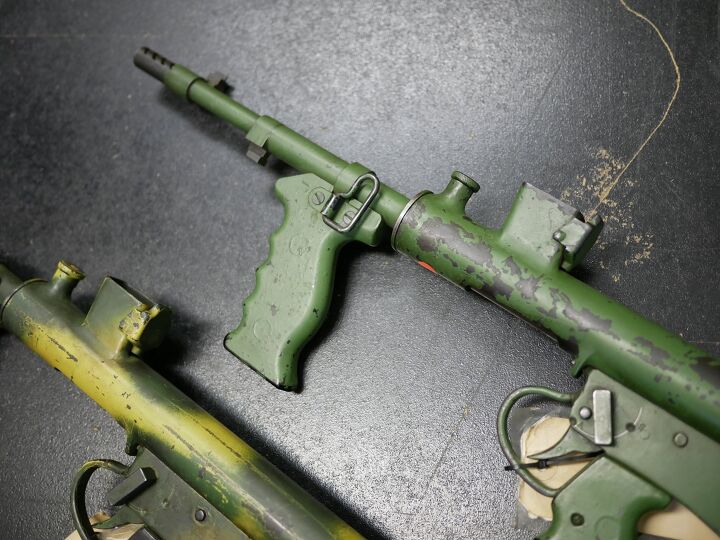An Early FDE: Australian Factory Camouflage Patterns of WW2

by Miles
Published: October 12th, 2018

Today there are two types of camouflage methods that immediately come to mind when we consider the task of trying to better conceal infantrymen and their weapons throughout the world.
The first and more readily available example is that of camouflaging (or bou-flauging as Marine Snipers call it) the small arms by hand. This can be by way of carefully taping up exposed portions and sensitive surfaces and then applying spray paint or actually hand-painting the firearms themselves with acrylic paints. Another method is to use tape to cover up the firearm (preferred by British sniper sections). Both of these methods allow soldiers to quickly configure their weapons for their environments, even allowing them to completely change out patterns when making drastic transitions between a winter and a desert environment for example.
Then of course we have our factory patterns which are permanent and applied to the exterior of the small arms by way of some sort of finishing process, Durakote or Cerakote being very popular in the commercial U.S. market at the moment. Flat Dark Earth (FDE) has become a hot choice for the Armed Forces, such designs as the Knight’s Armament M110 SASS and the Sig Sauer M17, M18 instantly come to mind. Although much cleaner and longer lasting, a permanent finish doesn’t allow for smooth environmental transitions unless a temporary exterior finish is applied such as described above.



However it didn’t always used to be this way and both of these methods are more or less modern innovations that have really gained momentum in recent decades. Previously there was no such thing as spray paint, or commercial baked on finishes. Soldiers used what they had and there were no questions about trying to break in the patterns of their small arms. Of course, we have examples of painted Maxim guns from the First World War, especially early Russian machine guns painted white for the snow and we also have some painting in German Maxim’s on the Western Front, so there are exceptions to the rule.
But what Australia did during the Second World War with the Owen, Austen, and even a couple prototype submachine guns was to apply a factory camouflage paint finish to the armies submachine guns before they ever went into service. A couple factors appear to have played into this decision, such as the fact that Diggers didn’t need to worry about snow falling while fighting the Japanese on a Pacific island. Many of the jungle environments where the Australian Army was heavily engaged were warm climates with vegetation that didn’t change much between the seasons in the year, so the actual colors of the jungles were a constant that could be blended in with.


Upon visiting the Australian War Memorial Museum in Canberra and the Lithgow Small Arms Museum in Lithgow, we were able to examine a number of these different submachine guns in their original paint schemes. What appears to be one of the more basic patterns were strokes of yellow overlaid on a basic green layer of paint. Some examples just have this green layer indicating that the green might have been the universal color applied first, then the yellows color later on. We also have examples of a dark green, more base olive drab pattern that coincidentally was on an Owen that was displayed in a Korean War exhibit. This indicates that there had to be some variation as the fighting in Korea was a very different environment than what was previously experienced in the islands of the Second World War. Refurbished examples that came back to the factory after WWII had their paint stripped.
Australia certainly ranks itself as one of the outliers among the belligerents in WW2 when it comes to these factory-painted small arms. Why this wasn’t experimented more among Imperial Japanese soldiers in the same campaigns isn’t known, but we do know that the Japanese appeared to place more emphasis of working with local vegetation to camouflage positions and at least the machine guns in those positions.


